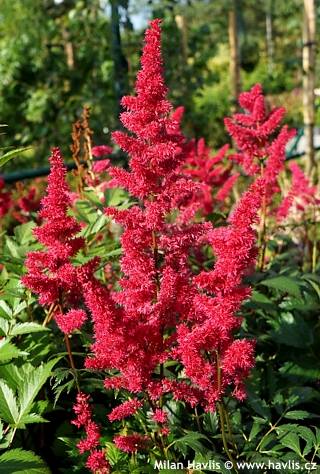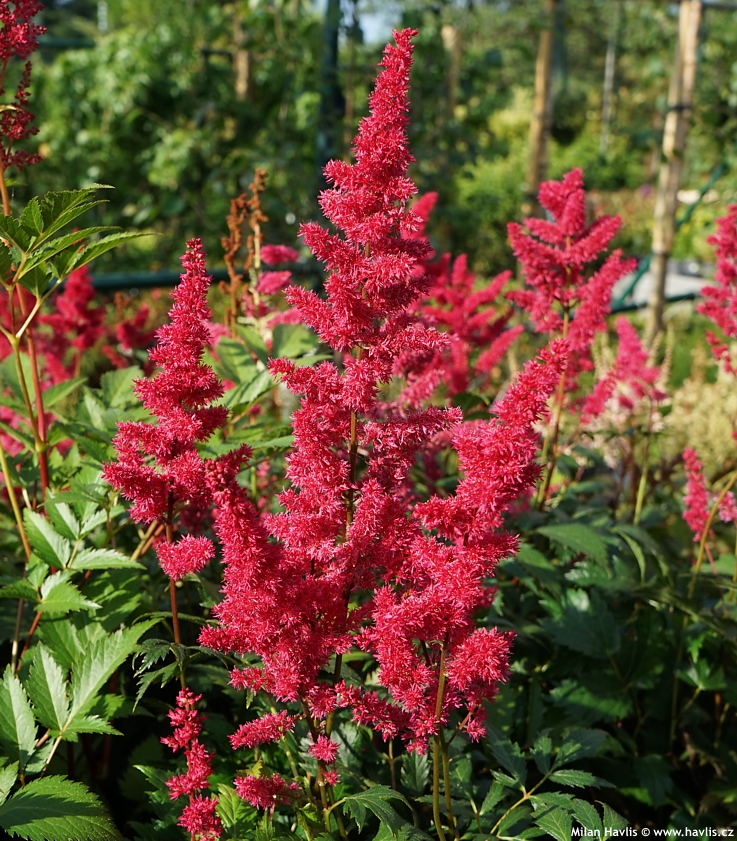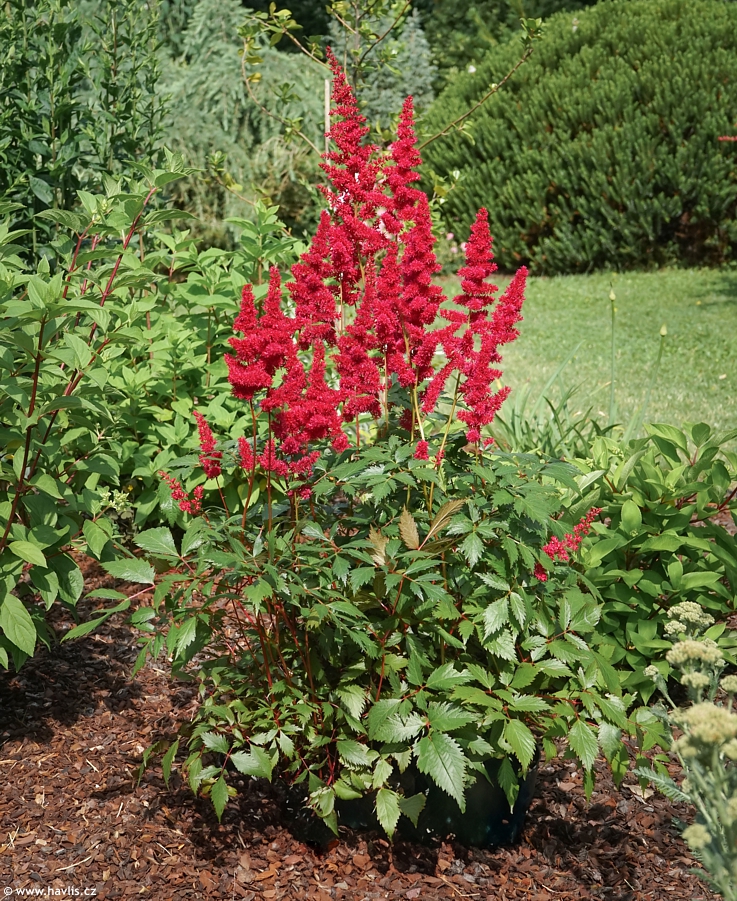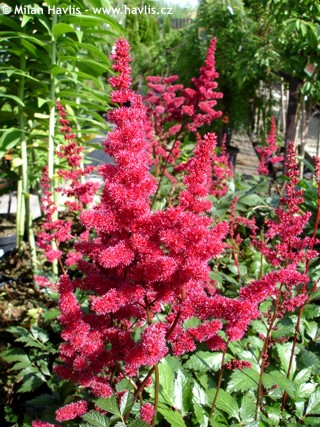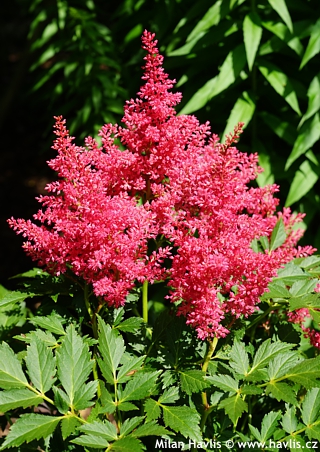Astilbe 'FANAL' astilbe (arendsii group)
Fanal astilbe is one of the earliest varieties with red flowers. It begins to bloom in mid June and forms rich raspberry red flowers atop 30-50 cm tall stems. Leaves are divided, healthy, glossy, mahogany red as they emerge and turning dark green before flowering starts. It was awarded AGM (Award of Garden Merit) by Royal Horticultural Society (RHS) in 1993.
Grow astilbe in humus-rich soil. If planted in boggy or regularly watered bed they can sit in full sun, too, otherwise choose a semi-shaded or shaded location. They are water loving plants and require a good dose of nutrients to look their best. They will not grow in chalky or clay soil that dries out in summer.
For best results divide the clumps every 3-4 years removing old and dead rhizomes in early spring. Also in the spring remove old leaves and last year’s flowers. If grown in poor soil you may need to cut back the entire plant after flowering to get rid of spent stems and tired foliage in order to encourage growth of new leaves. A dose of a liquid fertilizer is recommended. Fully hardy to about -34°C (USDA zone 4).
Last update 08-06-2022

































